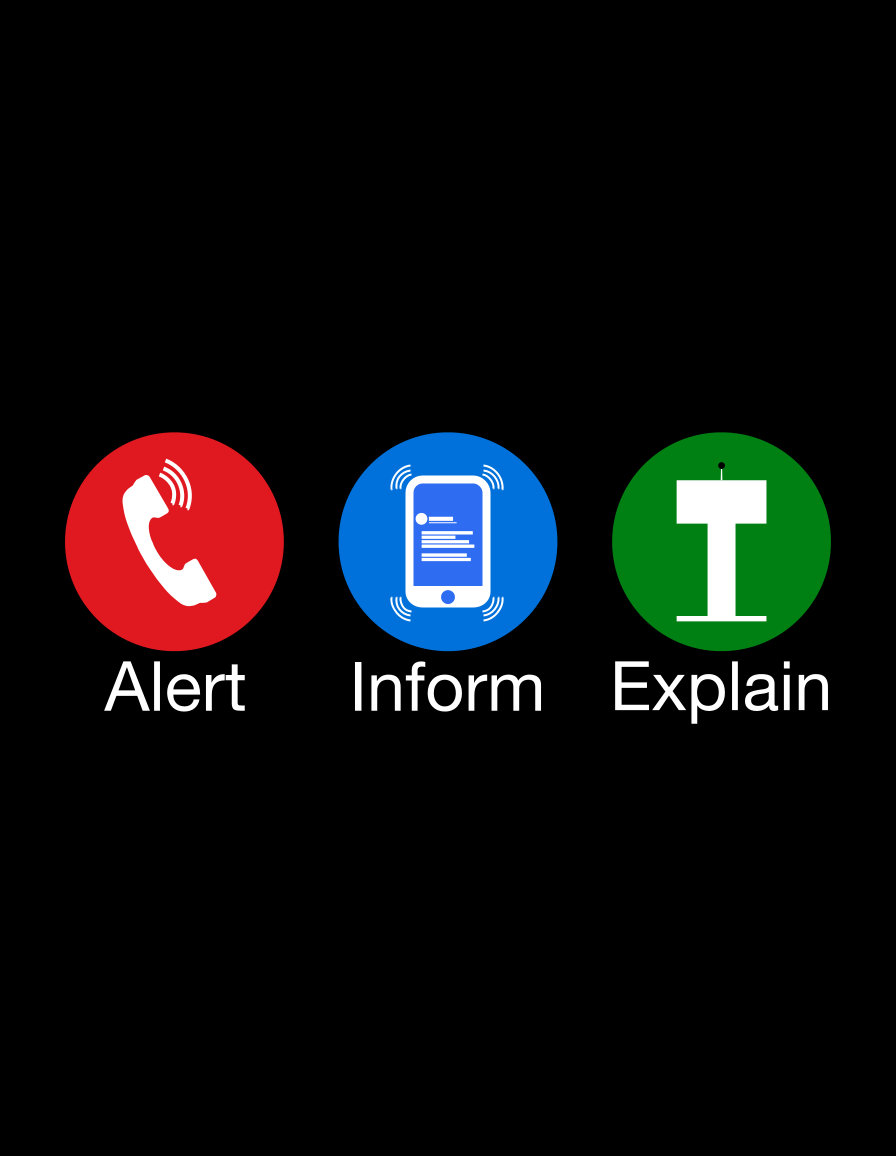At Oregon City High School, the district and administration have made a commitment to keep staff, students, and parents informed in the face of any emergencies that happen. But in recent events, the bounds of this commitment have begun to be pushed. In a recent newsletter sent out to those registered in the Oregon City School District (OCSD), the steps to follow in the case of an incident at school are listed, and it is stated that, “In case of an emergency, remember that clear communication is key.” But following recent events in the 2023-2024 school year, it seems that there may be different ideas of what ‘clear’ communication is.
Whether it is a directly reported threat, a potentially dangerous person on campus, or something else, there is a set safety plan in place for any potential hazard that you could imagine. In OCSD we follow the Standard Response Protocol (SRP), which can be found on iloveyouguys.org. This describes the actions to be taken in certain scenarios, like hold, lockdown, evacuation, etc. As an Oregon school, we also follow House Bill #3584, which was enrolled in early 2023 and describes the guidelines a school must follow for communication in the face of an emergency. In short, this bill states that in the case of a “safety threat action”, a school must send out timely alerts that include information like when said action happened, when it ended, a general description of the issue, and what action was taken to resolve the issue. This bill was put in place after parents and students across Oregon struggled with information from their schools and the fear of what might happen next. Portland father Eric Chambers led the call for this bill, stating that, “[accurate information] would have helped stem the dissemination of misinformation in the school community. Lockdowns are critically important safety procedures, but without knowing the circumstances that cause them, there is no way to help set our children’s minds at ease.”
In the three events that have happened at OCHS this year, parents, students, and staff have received alerts to “stay informed” throughout the day. These alerts have only included the very basic requirements, simply stating what safety plan was put into effect, and what time it happened. One example is of an alert sent out on Thursday, December 14th, around 11 a.m. It stated, “Oregon City High School is currently in ‘Secure’ at the advice of Oregon City Police due to a potential safety concern in the nearby area. This is out of an abundance of caution.” It included a reminder of what a “Secure” was and ended there. An update alert was sent out soon after saying that the “Secure” had been lifted. No further information was provided and no context was ever given.
This is similar to another alert sent out of the blue on November 3rd, 2023 at the end of second period. This one had no security protocol to even warn us first. It was a single notification sent out to district users and simply stated that a threat (no specifics were shared) was made to the school, handled as they saw fit, and that there was no hazard. “At this time there is no credible threat to the safety of our students or staff.” No further information was provided, and the entire thing was soon pushed aside and never mentioned again.
Yet again, on March 8, just two months ago, the school was put into a sudden hold and an alert was sent out soon after simply reminding students what a hold was, and that the police were handling a potential threat nearby. An update was then sent out saying the situation was still being investigated. Once students were released from a hold, an email was sent out later in the day saying that there was a “potential threat on Beavercreek Road outside of Oregon City High School,” and that it had been reported to and investigated by Oregon City Police Department. After this last message, students, staff, and parents were not provided with any more information or cautions.
This was handled much differently by Clackamas Community College (CCC), who neighbors OCHS and was also affected by the March 8th threat. In their alert that was sent out to everybody registered with them – which includes high school students in ACC classes – they included an explanation of the situation, detailing what students should keep an eye out for in order to stay safe on their campus and in the surrounding area. “The subject was described as a white male juvenile with a long black coat and with a visible barrel of a potential weapon,” the alert stated. It continued with a reassurance that OCPD were safely checking the campus and surrounding areas and that the individual was most likely not still on campus, but that “we felt a warning to our community was appropriate.” The statement provided by CCC had enough information and details to alleviate additional stress for students, while still leaving enough undisclosed so as not to further escalate the situation.
So why was it not handled the same way at OCHS? Yes, there may be rules that differ between a college and a high school, but students and parents in all levels of education deserve to know what might pose a risk to their or their child’s safety. It’s why Bill #3584 was proposed in the first place and backed by so many parents who were struggling to figure things out themselves and comfort their children in the face of uncertainty. So how can we do better? Figuring out the line between what is too much and what is too little in these potentially dangerous situations can be hard, but it’s what might be needed to create healthier relationships between our administration and community. Trust is built through communication, and with communication we can also find comfort. But there is also comfort in closure, closure in which we have not been given.







